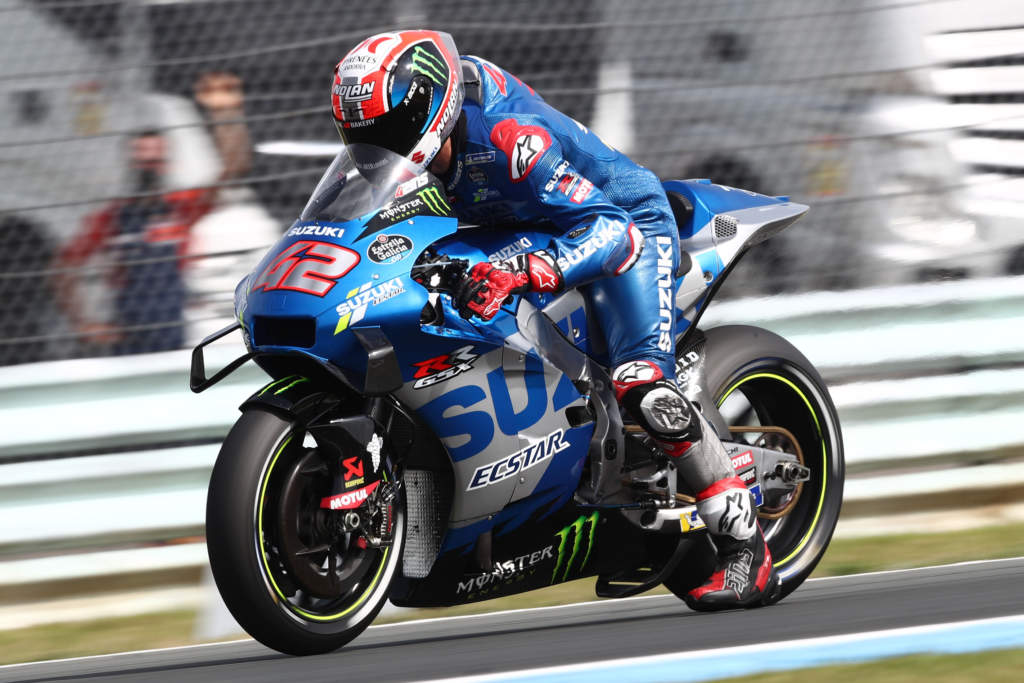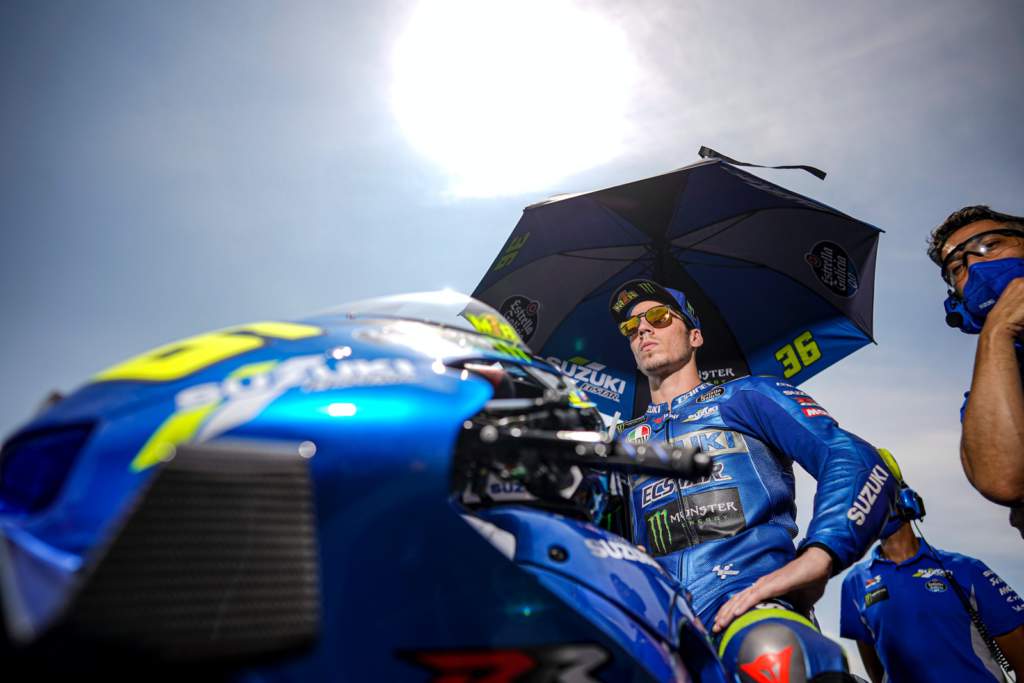Over the course of the past 12 months, MotoGP has taken one of its biggest technical jumps in recent years, as ride height adjustment devices have become de rigueur across the grid – and with reigning world champions Suzuki now the only team absent the vital component, this year’s summer break could well be a make-or-break time for it to catch up with its competitors.
Ride height devices are an evolution of the holeshot device first introduced by Ducati at the end of the 2018 season, to ensure that the Desmosedicis get a better start by locking out the front suspension. First trialled by Jack Miller, it means that no power is wasted in compressing the forks when riders release the clutch, ensuring a few vital hundredths of a second off the line.
Under the development of maverick Ducati Corse boss Gigi Dall’Igna, the concept soon spread from front suspension to rear, with a similar device trialled successfully at the opposite end of the bike to similarly ensure that power isn’t being wasted in compressing the shock at the start of races.

However, from there Dall’Igna’s engineering team at Bologna really got creative, by realising that riders could benefit from the rear system not just off the line but exiting every single corner – and set about modifying the system so that riders can lock the shock in its compressed position from a handlebar control.
The result is less wheelie and more power delivery – an all round success for the manufacturer that Ducati’s rivals have been quick to copy. Not something used on the exit of every corner on every lap, there’s nonetheless enough benefit in the system that every team bar Suzuki has now rolled out its own version of Ducati’s technology.
And the impact is substantial, admitted Suzuki rider Alex Rins when asked by The Race at the Dutch TT how much he and the team believed the absence is hampering Suzuki’s abilities not just in races but in qualifying – an area where the GSX-RR has been historically weak.
“We’re losing 0.2s, 0.3s, this is true,” Rins admitted. “Suzuki, they calculate it in every track, and in Sachsenring we were losing 0.4 seconds, and in Assen I don’t know exactly but it’s about 0.3s.”

For context, Rins finished qualifying at the Sachsenring in P11, 0.713s off pole position, while his teammate Joan Mir didn’t even make it out of Q1. Subtract the calculated missing 0.4s from Rins’ time and he would have been comfortably on the front row, while Mir would have at least been in Q2.
That’s why Mir has admitted that bringing Suzuki’s device to the first two races back after the five-week break at the Red Bull Ring could well be the make-or-break moment in his championship defence.
Struggling in the opening half of the year to find the consistency that was so important last year in winning the crown but signing off the first half of the season well with a podium at Assen, Mir been adamant for a while that the break will give Suzuki a chance to reset the year and start afresh – but to do that the team needs a full arsenal of weapons to fight with.

“We have to work to have the device as soon as possible,” he admitted, “so that we can start working with the same tools as the others. This is the first point, and then we need to improve on the details and try to be stronger. We’re probably still missing a bit of speed, not top speed but speed with new tyres, and we need to improve that area.
“The second part of the season will be like the first race of the season, more than this one was. It’s why this podium is so important, because we weren’t that close to the leader but we weren’t super far. If we improve more and we make a strong weekend anything is possible.”



